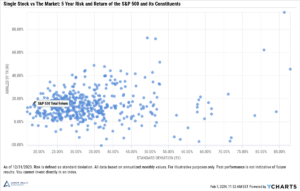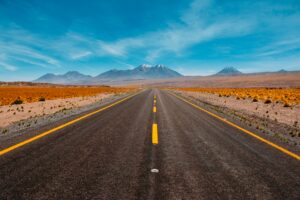If you have incentive stock options, you’ve probably heard of the alternative minimum tax (AMT). Essentially, the alternative minimum tax is a prepayment of taxes. In years when not subject to the AMT, you can receive an AMT credit. The credit reduces your tax liability to reflect prepaid tax. Here’s a summary of how exercising ISOs can trigger the alternative minimum tax – with examples.
Article is for informational purposes only and should not be misinterpreted as personalized advice of any kind or a recommendation for any specific financial or tax strategy. This is a general communication should not be used as the basis for making any type of tax, financial, legal, or investment decision.
How exercising incentive stock options can trigger the alternative minimum tax
One major drawback to incentive stock options is the potential to trigger the alternative minimum tax. The AMT is a parallel tax calculation which disallows certain tax deductions and non-taxable items under the regular system. AMT calculation allows just one exemption amount and it phases out with income. Taxpayers pay whichever number is higher: their tax due under AMT or the regular system.
Under the regular tax system, when you exercise ISOs, it’s not a taxable event. Under the alternative minimum tax, the bargain element (the value of the stock when you exercise minus the strike price) is includable in the taxable income for the year. This is why it’s sometimes called phantom income.
If incentive stock options are exercised and sold in the same calendar year, then the disqualifying disposition. Early sales of ISOs are taxed in the regular tax system. But if the shares are held, you’ll want to track your AMT carryforward credit and dual cost basis.
There are two AMT tax rates: 26% and 28%. AMT exemptions and phase out were increased significantly in the 2017 Tax Cuts and Jobs Act. These higher limits are scheduled to sunset in 2026.
6 Tax Strategies for Incentive Stock Options and AMT
When an ISO exercise triggers AMT (simple hypothetical example)
Here’s a simplified hypothetical example of how an ISO exercise can create an alternative minimum tax liability for a single filer in 2024 (ignoring all other sources of income and the 3.8% Medicare tax):
- 100,000 incentive stock options
- $1 strike price
- $4 current share price
Regular tax calculation:
- Exercise of ISOs is not includable in the regular tax calculation so there is no taxable spread or tax due
AMT tax calculation:
AMT example after ISO exercise |
Amount |
Notes |
| Alternative minimum taxable income (AMTI) | $300,000 | = $3 spread * 100,000 (creates a positive AMT adjustment on a return) |
| Less AMT exemption | -$85,700 | single filer in 2024 (taxpayer isn’t over the phase-out limits) |
| Tentative minimum tax base | $214,300 | |
| Tentative minimum tax | $55,718 | = $214,300 * 26%¹ |
| AMT Due | $55,718 | Tentative minimum tax > regular tax due ($0), so AMT is triggered. AMT due = tentative minimum tax – regular tax |
This fictional example is overly simplified for illustrative purposes. Typically, there’s tax due in the regular system also. So for example, had the regular tax due been $50,000 above, the tentative minimum tax would still be $55,718, leaving an AMT of $5,718.
¹ In 2024, the 26% AMT tax rate increases to 28% when AMTI exceeds $232,600 for single/married taxpayers. In this hypothetical example, the AMT taxable income is all in the 26% bracket, so the AMT tax due from the ISO exercise would be $55,718.
Note: If the taxpayer had any income in the regular tax system, it would be reduced by the standard or itemized deduction. The standard deduction would be disallowed (added back) in the AMT calculation as well as some itemized deductions.
See 2024 tax brackets and rates.
AMT credits: recuperating prepaid tax
There is an AMT silver-lining: in years not subject to the AMT with regular capital gains, an AMT tax credit may be available. To recoup any prepaid tax, taxpayers must track two different sets of cost basis on their incentive stock options.
The tax basis for regular income tax is different from the alternative minimum tax cost basis. Following on the previous example:
- Regular tax basis equals the purchase price of the ISOs = $100,000
- AMT tax basis equals the purchase price + positive AMT adjustment = $400,000
Notes on AMT credits:
- The maximum credit in a tax year is the difference between the tax due in the regular calculation and tentative minimum tax. But the credit can’t exceed the carry forward credit available.
- The shares that triggered the AMT at exercise don’t have to be sold to take an AMT credit. The two things aren’t directly linked, though the cost basis differentials may come into play.
- AMT credits can only be used in years when not subject to the alternative minimum tax.
- Excess or unused AMT credits can be carried forward indefinitely.
Selling an exercised ISO: calculating gains at sale and applying an AMT tax credit (simple hypothetical example)
Following on the previous example, assume after meeting the holding period for a qualifying disposition of ISOs the stock is sold for $7/share. Here’s a streamlined 3-step example of the taxable gain calculations (again, ignoring all other sources of income, the 3.8% Medicare tax, and assuming no changes to 2024 tax brackets/deductions):
Step 1
Regular tax calculations |
Amount |
Notes |
| Taxable long-term capital gain | $600,000 | = ($7 – $1) * 100,000 = $600,000 |
| Less standard deduction | -$14,600 | Assuming single taxpayer who doesn’t itemize in 2024 |
| Taxable income | $585,400 | |
| Tax Due | $84,081 | (at 0%, 15%, and 20% brackets – see 2024 capital gains tax rates) |
Step 2
Alternative minimum tax calculations |
Amount |
Notes |
| Alternative minimum taxable income (AMTI) | $300,000 | = Regular gain ($600,000) – AMT gain (($7 – $4) * 100,000) = $300,000. (This creates a negative AMT adjustment on a return and the result is AMTI).² |
| Less AMT exemption | -$85,700 | single filer in 2024 (taxpayer isn’t over the phase-out limits and doesn’t itemize) |
| Tentative minimum tax base | $214,300 | |
| Tentative minimum tax | $25,091 | AMT uses the same tax rates and brackets for long-term capital gains as the regular tax system |
| AMT Due | $0 | Tentative minimum tax < regular tax due |
² This is complicated in real life. Recall that exercising and holding ISOs creates dual-basis stock. Your basis for regular tax purposes is your exercise price. Basis for AMT purposes is your exercise price plus the spread at exercise. So your gain for the AMT calculation will be less than for regular tax purposes (possibly even a loss). The difference in the gain between the tax calculations can provide a negative AMT adjustment when the shares are sold. But if you ultimately sell the shares for less than the value at exercise, it creates an AMT loss. If the AMT loss is greater than $3,000, the negative AMT adjustment that year is limited to your gain under the regular tax system plus $3,000. The remaining AMT loss can be carried forward. Depending on the exact values (over/under/in between) the tax treatment will differ.
Step 3
Figuring the AMT credit |
Amount |
Notes |
| Regular tax due | $84,081 | From above |
| Tentative minimum tax | $25,091 | From above |
| AMT triggered | $0 | Tentative minimum tax < regular tax due. Credit can’t be used if subject to AMT. |
| Total AMT carry over credit from exercise | -$55,718 | Equals the AMT that was paid (it’s an accelerated tax) |
| Regular tax due after applying full AMT credit | $28,363 | = ($84,081 – $55,718). AMT credit can reduce the regular tax liability but only to the tentative minimum tax. Here, the tax due is still greater than the tentative minimum tax, so the full credit can be used. If the full credit couldn’t be used this year, it can be carried forward indefinitely. |
IMPORTANT NOTES!
- Despite appearances of these illustrative examples, they are actually quite simplistic. The AMT calculation is very complex. Consulting a qualified tax advisor is strongly recommended.
- Examples assume a very limited set of facts and assumptions. For simplicity, other factors, such as the 3.8% Medicare tax and state income tax (or state AMT) have been ignored. Expanding or altering the assumptions can alter outcomes, sometimes significantly.
- Examples are hypothetical! Not tax advice!
Tax and financial planning with stock options
Not every individual with incentive stock options will have tax planning options to consider. Liquidity constraints have a huge impact on your options. But either way, working with a stock option advisor and CPA can still be a great strategy as you’ll ultimately need to plan your exit and diversify a concentrated stock position.
At the end of the day, all of the tax planning opportunities with ISOs involve risks. There’s a risk the tax laws will change, your tax situation will be different than expected, and of course, the risk that the stock doesn’t perform as you hope. The focus of this article has been on the alternative minimum tax, but the investment implications cannot be ignored. The exposure is different in each situation.
For more on stock option and IPO planning, please visit our website.
Last reviewed March 2024











